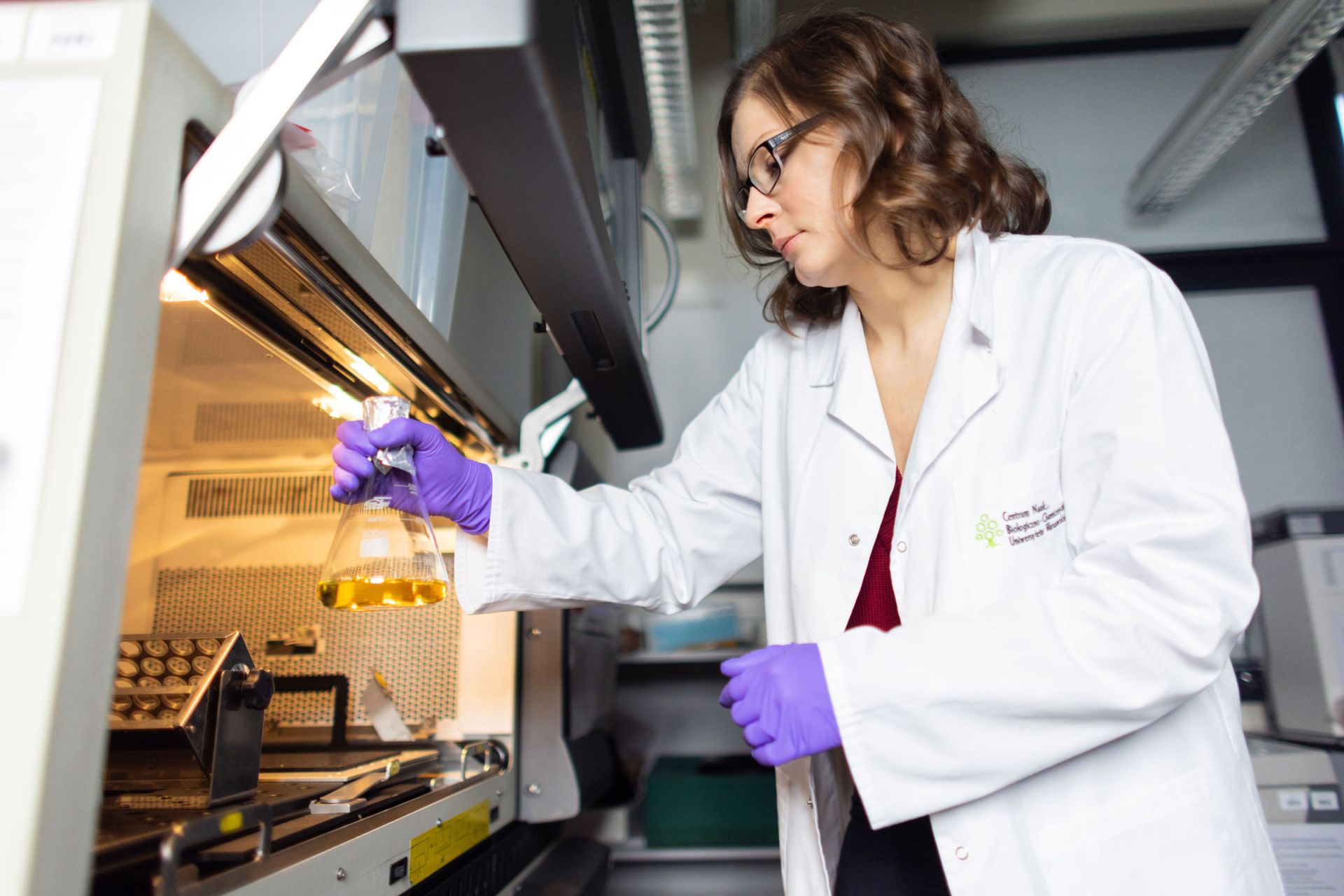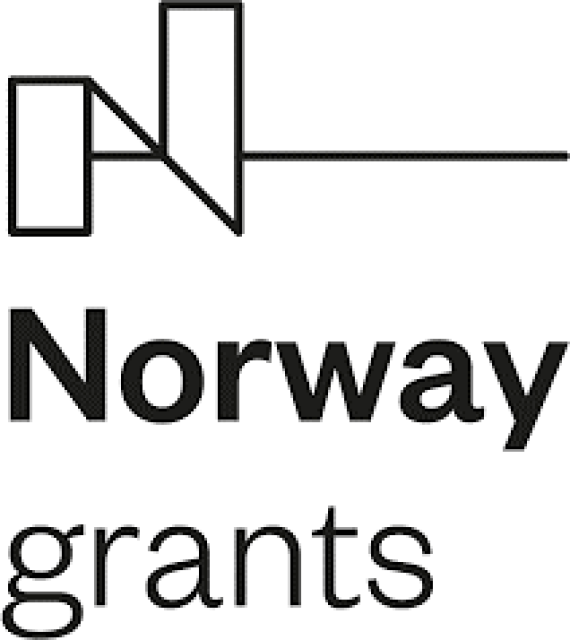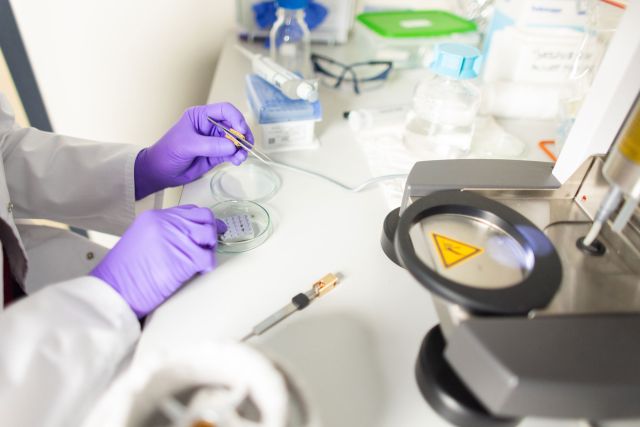Principal Investigator
:
Dr Katarzyna Bandyra
University of Warsaw
Panel: NZ1
Funding scheme
: POLS
announced on
announced on 16 March 2020
Mitochondria, which act as small 'powerplants', are essential for almost every human cell to function properly. The dysregulation of these organelles is associated with numerous diseases, including cancer, neurodegeneration and aberrant inflammatory response. In order to function properly, mitochondria import some proteins that are made elsewhere in the cell. One such protein is polynucleotide phosphorylase (PNPase), an RNA-degrading enzyme found in many organisms. Mutants of hPNPase are found in humans with various disorders, mainly neurological, highlighting the importance of this protein in regulation of mitochondrial metabolism. Some hPNPase is also located in the mitochondrial matrix, where it interacts with another protein, Suv3 helicase, to destroy superfluous RNA. However, most of the human PNPase is located in the mitochondrial intermembrane space (IMS), the area between the two membranes surrounding the mitochondrial matrix, where its role is puzzling.
 dr Katarzyna Bandyra, fot. Michał Łepecki
dr Katarzyna Bandyra, fot. Michał Łepecki
I have been familiar with PNPase for a long time, as I have studied the functions of this enzyme in bacteria. It is well known that bacterial PNPase participates in the degradation and processing of RNA. I have discovered that it can also form a complex with another protein and RNA, so that its function turns 180 degrees and, instead of degrading RNA, it begins to protect it. In this way, one enzyme, whose primary function is to destroy RNA, under certain conditions also acts as an RNA chaperone. Both human and bacterial PNPase are very similar in sequence and structure, so it is possible that they have similar functions as well.
My research focuses on understanding the function of human PNPase in the mitochondrial intermembrane space. My hypothesis is that the human PNPase, similarly to the bacterial enzyme, could protect RNA, and this could be its role in IMS. Switching of hPNPase activity could occur in the presence of a special type of RNA that hPNPase could not destroy, or another protein, as in the case of bacterial PNPase. On the other hand, in the mitochondrial matrix hPNPase together with the Suv3 protein would degrade RNA. This way, by physical separation of the pool of hPNPase into two different compartments, both its activities could be supporting optimal performance of the mitochondria.
 dr Katarzyna Bandyra, fot. Michał Łepecki
In order to test whether human PNPase can have two different functions in mitochondria, I am carrying out experiments using biochemistry, biophysics and molecular and structural biology techniques. Their aim is to determine whether, in addition to RNA degradation, hPNPase functions as an RNA-dependent regulatory protein that protects RNA, e.g. during transport into or out of mitochondria. In addition to studies of hPNPase itself, I am developing a method to obtain information about other proteins and RNA molecules interacting with hPNPase directly in human cells. To this end, I am isolating mitochondria and separating them into fractions that correspond to IMS or matrix, and then performing pull-down experiments to compare protein and RNA partners of hPNPase at different locations. Moreover, I will investigate complexes of hPNPase with the identified proteins and RNAs in vitro, and for the most stable ones I will determine the precise three-dimensional structure using cryo-electron microscopy. These studies will help to understand the role of human PNPase in the mitochondrial intermembrane space and are a prelude to a long-term research plan that may contribute to the development of gene therapies for mitochondrial diseases.
dr Katarzyna Bandyra, fot. Michał Łepecki
In order to test whether human PNPase can have two different functions in mitochondria, I am carrying out experiments using biochemistry, biophysics and molecular and structural biology techniques. Their aim is to determine whether, in addition to RNA degradation, hPNPase functions as an RNA-dependent regulatory protein that protects RNA, e.g. during transport into or out of mitochondria. In addition to studies of hPNPase itself, I am developing a method to obtain information about other proteins and RNA molecules interacting with hPNPase directly in human cells. To this end, I am isolating mitochondria and separating them into fractions that correspond to IMS or matrix, and then performing pull-down experiments to compare protein and RNA partners of hPNPase at different locations. Moreover, I will investigate complexes of hPNPase with the identified proteins and RNAs in vitro, and for the most stable ones I will determine the precise three-dimensional structure using cryo-electron microscopy. These studies will help to understand the role of human PNPase in the mitochondrial intermembrane space and are a prelude to a long-term research plan that may contribute to the development of gene therapies for mitochondrial diseases.

Project title: Structural and functional studies of human PNPase in mitochondrial RNA metabolism
Dr Katarzyna Bandyra
Katarzyna Bandyra graduated from the University of Warsaw with a master's degree in Biotechnology, specialising in molecular biology. She did her PhD at the Department of Biochemistry, University of Cambridge, where she became fascinated with structural biology. After graduating, she continued her work at the University of Cambridge using electron cryomicroscopy (cryoEM), a rapidly developing technique which has provided insight into a variety of macromolecular complexes that were not within the scope of the structural biology field before. In 2021, she returned to Poland with her own research programme, which uses cryoEM to study proteins and their complexes with RNA.


